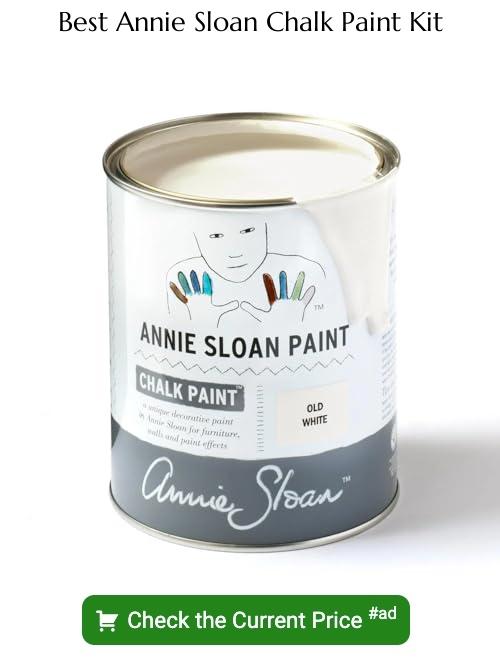Last updated on
Learn the Annie Sloan chalk paint technique to transform furniture with a matte finish and vintage charm.
Key takeaways:
- Gather necessary supplies: paint, brushes, wax, sanding blocks, rags, tape, drop cloth.
- Prepare your workspace: clean, well-ventilated, good lighting.
- Prep and clean furniture: sand, wipe down with warm water and detergent.
- Apply first coat of paint: use small brush or roller, thin if needed.
- Tips for using chalk paint on kitchen cabinets.
Gather Your Paint and Supplies
Before embarking on your painting project, ensure you have the following:
- Annie Sloan Chalk Paint®: Choose a color that complements your piece and space.
- Brushes: For large areas, use a flat brush; for detailing, a smaller round one is ideal. Annie Sloan’s brushes work excellently with Chalk Paint®.
- Wax: Annie Sloan’s soft wax seals your work and is available in clear or dark for aging effects.
- Sanding Blocks: Lightly distress edges or details post-painting for a worn look.
- Clean Rags: Use lint-free cloths for applying wax and wiping away dust.
- Painter’s Tape: Protect areas from unwanted paint, such as hardware or interiors.
- Drop Cloth: Keep your workspace clean with a cloth or old sheet underneath your project.
Moreover, ensure proper ventilation and don lightweight gloves to keep hands clean during the process.
Prepare Your Workspace
Before diving into your project, ensuring you have a clean, well-ventilated space is crucial. Lay down drop cloths or old newspapers to protect floors and surfaces from paint spills and splatters.
Assemble all necessary tools—brushes, rollers, paint trays, and painter’s tape—and keep them within easy reach to maintain a smooth workflow.
Make sure the area has ample lighting so you can spot any streaks or missed spots as you paint. Keep a damp cloth handy for quick clean-up of any accidental smudges.
Adequate preparation sets the stage for a more enjoyable and efficient painting experience.
Prep + Clean Furniture
Start by thoroughly inspecting the piece for any loose paint, flaking varnish, or damage. Address these imperfections with a light sanding to create a smooth, even surface for the paint to adhere to.
After sanding, wipe down the furniture using a lint-free cloth and a mixture of warm water and mild detergent to remove any remaining dust, grime, or oils that could prevent the paint from sticking.
Allow the surface to dry completely before moving on to painting. This cleaning step is crucial to ensure the longevity and quality of your paint job.
Apply First Coat of Paint
Begin with a small, flat brush or foam roller for application ensuring even coverage. Chalk paint dries quickly, so work in manageable sections.
Don’t overload the brush; a little goes a long way. If the paint seems too thick, thin it slightly with water. Keep strokes consistent, flowing in one direction for a smooth finish or utilize cross-hatch strokes for a textured look.
Allow the coat to dry thoroughly, usually about 30 minutes to an hour, before considering a second application. Remember, brush marks will often smooth out as the paint dries.
How To: Use Chalk Paint® On Kitchen Cabinets
Begin by removing cabinet doors and hardware to ensure an even application without obstructions. Label doors and hardware for easy reassembly later. Clean all surfaces with a degreaser or mild soap and water to remove grime and residue. Once dry, lightly sand the surfaces to create a slight texture for better paint adhesion; there’s no need for vigorous sanding due to the paint’s adherence properties.
When the surface is prepared, stir your Annie Sloan Chalk Paint® thoroughly. Then, using a high-quality brush or roller, apply the first coat. Brush in the same direction as the wood grain for a smooth finish. Be patient, as the first coat may not cover completely. Allow sufficient drying time between coats, following the manufacturer’s recommendations. Usually, two coats are enough, but additional layers may be necessary for full coverage or for a more saturated color.
Once the final coat is dry, consider applying Annie Sloan Soft Wax to protect the finish. Apply it with a brush or cloth, wipe off the excess, and buff after 24 hours. The wax seals the paint, making it more durable and giving it a subtle sheen. Remember, patience is key—the full curing process can take up to three weeks, during which the finish will harden and become more resistant to daily kitchen wear and tear.
Recap:





